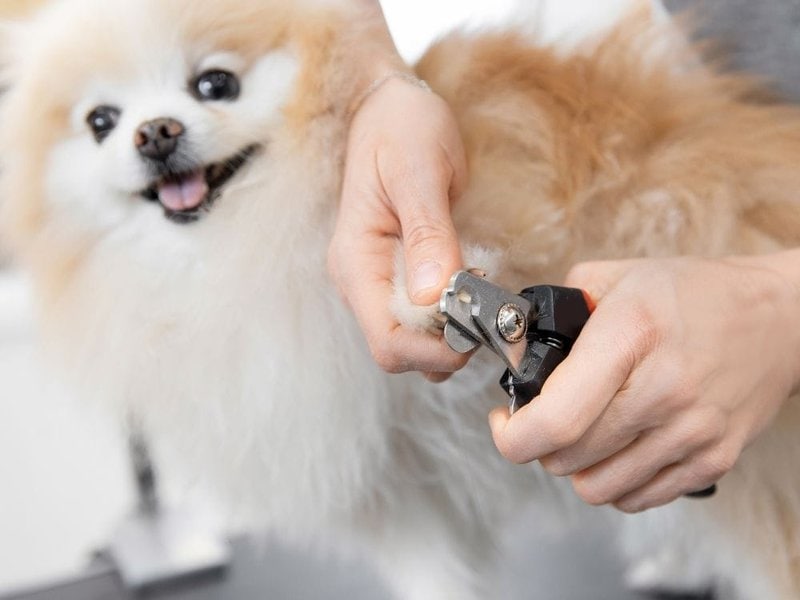Nail trimming is one grooming exercise that most dog owners are reluctant to carry out; This is understandable because a lot can go wrong so fast, and this includes cutting the nail quick.
Now, how do you trim a dog’s nails without harming its quick? Safe trimming of a dog’s nails without causing harm to the quick involves identifying the location of the quick and taking care to cut the nail gently, with the appropriate equipment.
However, if you’ve mistakenly over-trimmed your Fido’s nails and hurt its quick, there’s no need to fret! You can treat a damaged nail quick from home, and it is these treatment methods, along with potential implications of cutting the quick of a dog’s nails that make up the bulk of today’s article. But to ensure you won’t need to treat your doggie for a wounded nail, let’s first see how you can avoid cutting the nail quick in the first place.
How Do I Stop Myself From Cutting The Quick?
What Is A Dog’s Quick?
If you’re unfamiliar with the term, a dog’s quick refers to a group of blood and nerve vessels located beneath the nails and just atop the canine’s nail bed.
The quick serves as a source of nourishment for strong, healthy nail growth in dogs, and also transmits touch sensations from the pooch’s nails to its brain.
How Can You Tell Where A Dog’s Quick Is?
In order for you to avoid cutting your dog’s quick when trimming its nails, it is important that you get familiar with the location of the quick in a canine’s nails.
For White-Colored Nails
The quick is relatively easy to identify in dogs with white nails. And it manifests as a pink or pale region in the center of the doggie’s white nails – like a nail within a nail.
For Dark-Colored Nails
Identifying the location of the quick for doggies with dark nails is near impossible, due to the coloration of the nails.
You can guess the location of the quick in a dark-colored nail by looking into the center of the unclipped nail; The presence of a small, black circle indicates the beginning of the quick.
If the circle isn’t visible initially, clip off a tiny part of your doggie’s nails and take a look again. You’re to repeat this process till the small, black circle indicating the presence of the quick becomes visible, after which you should stop cutting.
How To Know When A Dog’s Nails Are Due For Cutting?
Below are some telltale signs that you need to bring out the cutting tool and trim Fido’s nails:
- Awkward walking steps.
- Nail scratches found on the floor.
- The nails become weak and break easily.
- The dog becomes wary of walking on hard and smooth surfaces.
Step-By-Step Guide To Cutting A Dog’s Nails
Cutting your beloved pooch’s nails for the first time can be difficult for you and confusing for your pooch. Not to worry, here is a quick guide to cutting the nails.
Choosing A Cutting Tool
You will most likely be presented with two general choices when it comes to choosing a cutting tool to trim your dog’s nails, and this can either be the nail clipper or nail grinder.
Nail clippers involve the use of stainless steel blades to cut portions of a dog’s nails.
Nail grinders, on the other hand, employ the use of a high-powered motor to grind on, and subsequently reduce the length of a doggie’s nails – think of it as a sandpaper powered by an engine.
Both options carry out the task of reducing a dog’s nail length quite effectively, and your choice of a cutting product will most likely, come down to personal preference, budget and your doggie’s personality.
In addition to the nail cutters, you may also need a pair of scissors to trim the hair around the doggie’s nails, a nail file to smoothen rough edges and baking soda to stop bleeding.
Ensure Your Dog Is Calm
Dogs may naturally become agitated at the sight of a cutting blade, hence it’s imperative that you keep your furry friend calm, if you’re to trim its nails without stress.
It can help to have some of your dog’s favorite treats, toys or clothing with a familiar scent around, to reassure your pooch; This also helps your doggie associate the process of nail trimming with treats, thereby making the process even smoother in future.
Cutting The Dog’s Nails
Below are the steps to take to cut a dog’s nails:
- Try lifting and holding your doggie’s paws to determine its level of satisfaction with you handling its paws.
- If your dog seems nervous or worried, you may need to reassure it with treats and toys.
- Examine the nails to determine the location of the quick; This, you can do, following the steps detailed above.
- Place the cutting tool, either at the edge of the nail or at a 45-degree angle, and cut gently.
- Only cut off small bits of nail at a time.
- Ensure you trim only one nail at a time.
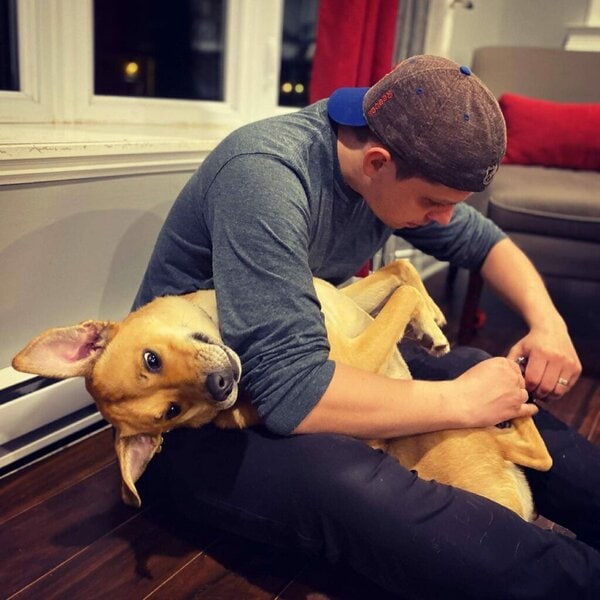
Can You Shorten A Dog’s Quick?
One way by which you can shorten and get your dog’s quick to recede, is by constantly trimming its nails. Due to reasons beyond the scope of this article, dog quicks recede with constant trimming and filing of the nails. And this recession usually continues till the quick is at a safe level.
Your Vet Can Be Of Help
If you’re unwilling to wait long to shorten your dog’s quick, you can enlist the help of your vet to help trim your pooch’s nails.
Vets can help reduce your dog’s quick to the acceptable minimum by clipping its nails to the lowest level possible; This process takes place under heavy sedation, and usually involves a vet cutting right through the quick. To stop the heavy bleeding that occurs as a result of cutting through the quick, the nail is subsequently cauterized.
How Often Should You Trim A Dog’s Nails?
The average dog needs a nail trim every one to two months, but this frequency depends largely on certain physical and environmental factors. And some of the factors that play a part in how often a dog’s nails are trimmed include:
- The dog’s breed
- Activity levels
- Rate of nail growth
- Nature of the dog’s regular walking surfaces
Does The Quick Grow With The Nails?
Yes, a dog’s quick does grow with the nails. The anatomy of a dog’s nail is such that the quick is originally shorter in length than the nails, but as the nail increases in length, the quick also grows longer.
Is It Possible For A Quick To Overgrow?
It is indeed possible for a dog’s quick to overgrow, and this usually occurs due to failure to trim the doggie’s nails when due.
Additionally, if you leave a dog’s nail uncut for too long, the quick may grow to reach the tip of the nail; thereby causing complications when you’re eventually ready to trim your Fido’s nails.
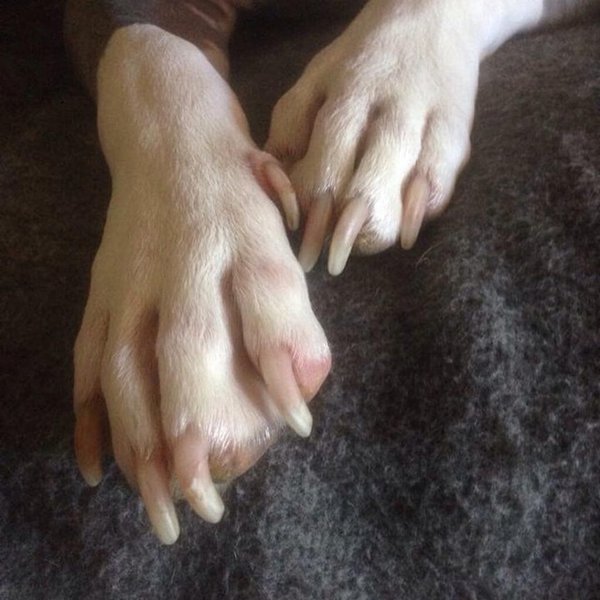
What Happens If You Cut The Quick Of A Dog’s Nail?
Excessive Bleeding
The quick is basically a blood vessel supplying blood to the nail bed; hence, any rupture to the quick will result in profuse bleeding.
Healthy dogs typically have no problems dealing with this bleeding, as their bodies are capable of releasing clotting agents to stop the bleeding. But for pooches suffering from certain underlying health conditions, this bleeding can be dangerous if left unattended to, and may result in the death of the doggie.
Risk Of Infections
If left untreated or if you fail to give the appropriate medical attention, injuries from a cut to the quick may develop into secondary skin infections, and these can be particularly harmful to your Fido’s overall health.
Your Dog Suffers Pain
Your dog’s nail bed is a trove of nerves that are connected to the brain, and it is safe to say your furry friend will feel severe pain, every step of the way, as you slice through its nail quick.
Your Doggie May Lose Trust In You
Apart from the physical implications of cutting the quick of a dog’s nail, your dear Fido may also lose trust in your grooming capabilities. Consequently, your doggie may become wary of subsequent attempts to trim its nails, thereby making the process even more complicated.
However, with the use of positive reinforcements in the form of treats and praises for your furry friend, you can slowly rebuild trust
How Long Does A Dog Quick Take to Heal?
Dogs with a cut quick will generally begin to feel better between 24 to 48 hours after treatment. However, the healing process is significantly longer, and it may take up to two weeks for the quick to heal naturally, and for the nail to grow back over the nail bed.
During this period, you should limit your dog’s exercising and discourage rough play, to prevent the wound from reopening.
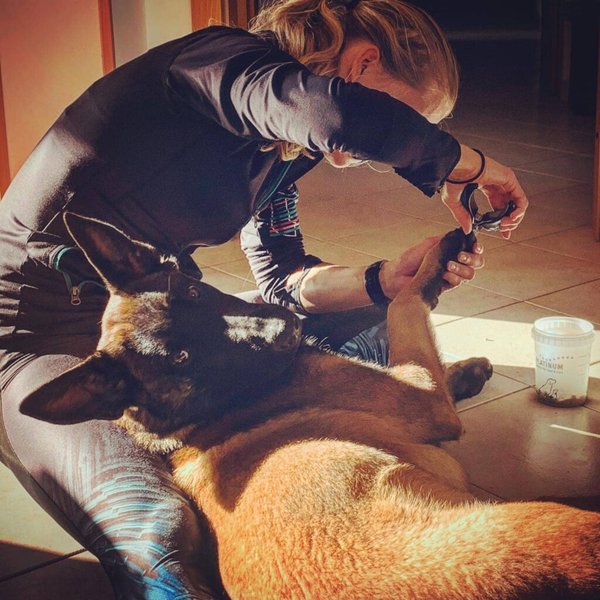
What To Do If A Dog’s Quick Is Exposed?
Stay Calm
Our furry friends look up to us a lot, and you fretting over an overcut quick isn’t really going to help matters. So, if you cut too deep into your doggie’s nails and hit the quick, stay composed, and don’t panic – your dear fido will be okay if given the appropriate treatment.
You can also keep your pooch from becoming agitated by offering it treats and toys to play with.
Stop The Bleeding With A Clotting Agent
Immediately your dog’s quick is exposed, the first point of action is to apply a clotting agent over the bleeding area to stop the flow of blood. And this is why it’s necessary to have emergency supplies at hand when trimming your dog’s nails.
One of the most widely used coagulants in stopping the bleeding of overexposed quicks in dogs is Styptic powder, which is obtainable at local medicine stores. You can apply styptic powder to treat over-trimmed nails by dipping the injured toenail into the powder and putting pressure on the affected area.
If you don’t have styptic powder at hand, other clotting agents that you can use to reduce bleeding from a dog’s broken nail include:
- A mixture of cornstarch and water
- Flour and baking soda
- Potassium permanganate
While applying these coagulants to curb bleeding in your dog, it is essential that you put moderate pressure on the wound to aid the clotting process.
Antibiotic gels such as Neosporin can also be used to treat broken nails in dogs. And along with its soothing effect, Neosporin also helps to prevent the development of further infections from the injury.
Additionally, washing your dog’s broken nail with a mild, antiseptic soap can help reduce bleeding and disinfect the wound.
Cleaning And Bandaging The Wound
Once you’ve successfully stopped the bleeding, mop the surface of the injury and the surrounding area with a clean, damp cloth – take care to do this with gentleness, otherwise you risk reopening the wound.
After cleaning the wound, wrap the injured area with a clean bandage to prevent your pooch from licking the injury. It is important that the bandage is wrapped tightly round the injury so your doggie can’t dismantle it with its teeth.
NOTE! If you fail to stop your dog’s nail from bleeding 30 minutes after hitting the quick, you should consult with your vet, and you may need to take your doggie in for professional treatment.
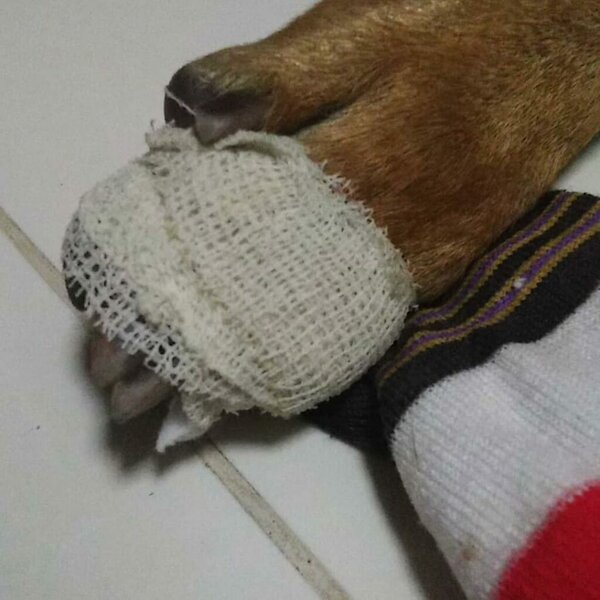
Related Questions
Why Do Dogs Hate Getting Their Nails Clipped? The major reason dogs hate getting their nails clipped is the pain. And this hate is particularly expressed among dogs that have been cut too close before. Other reasons your pooch might express an aversion to getting its nails clipped include fear and not properly teaching your doggie to have its nails trimmed as a puppy.
Do Vets Sedate Dogs To Cut Nails? It may be necessary for a vet to sedate a dog before cutting its nails, to curb anxiety and aggression. Also, in procedures that’ll induce heavy bleeding, such as cutting an overgrown nail quick to reduce its length, it is essential that the dog is sedated first. The amount it’ll cost to sedate a dog for nail trimming varies, depending on where you get it done. But be prepared to pay upwards of $50 to sedate and trim your dog’s nails at a vet hospital.
Do Long Nails On Dogs Hurt Them? Yes, long nails hurt a dog. Leaving your dog’s nails to grow abnormally long causes damage to the doggie’s feet tendons, which in turn leads to deformation of the paws. In the same vein, long nails make it easy for dogs to slip and fall, and this may result in injuries to your doggie.

